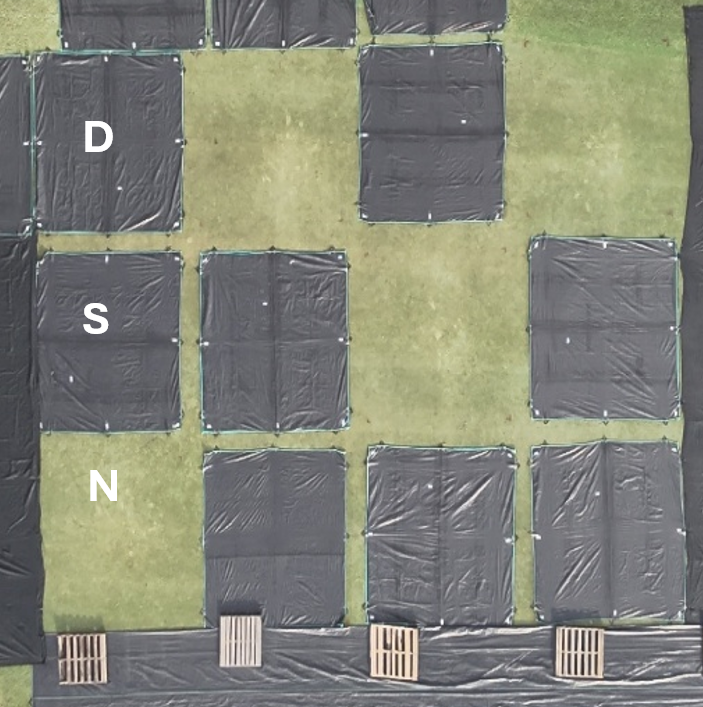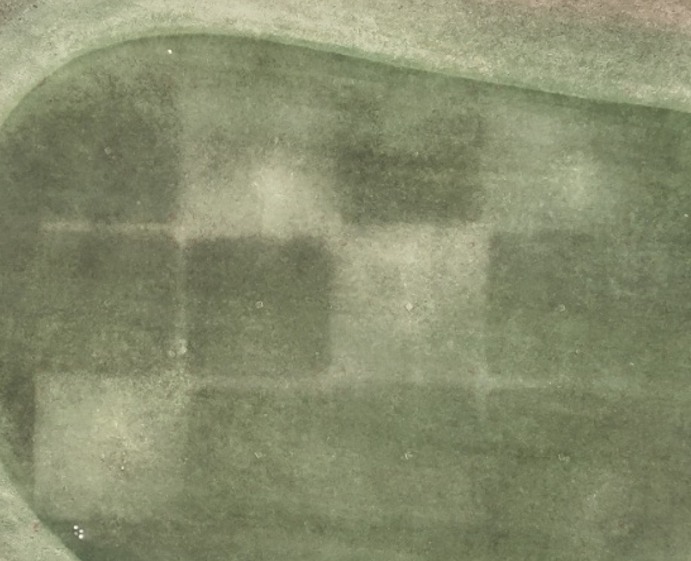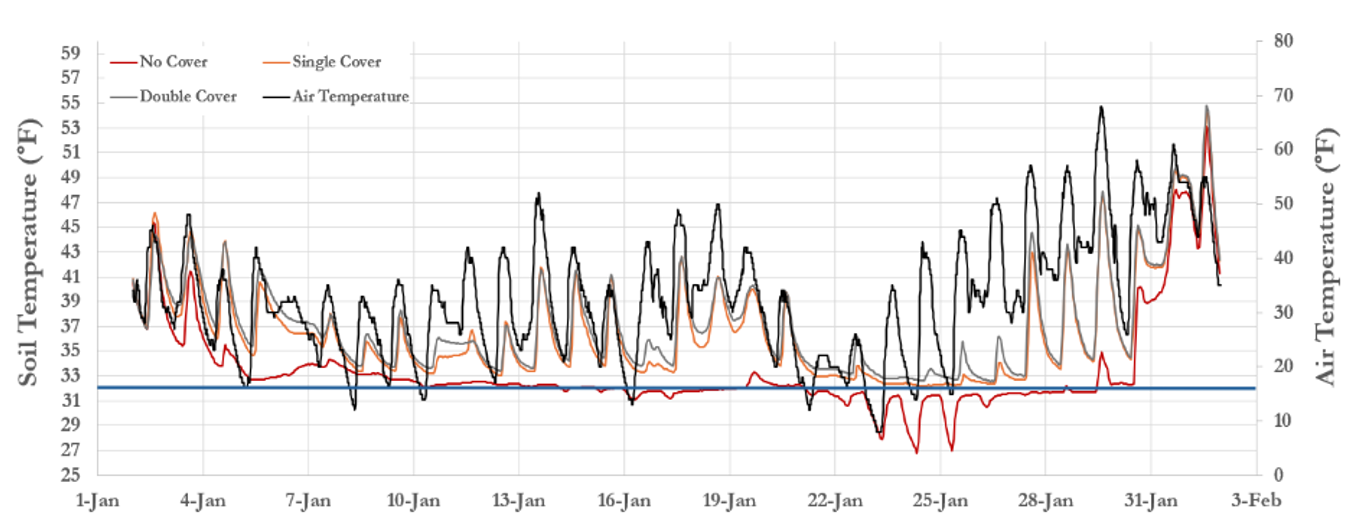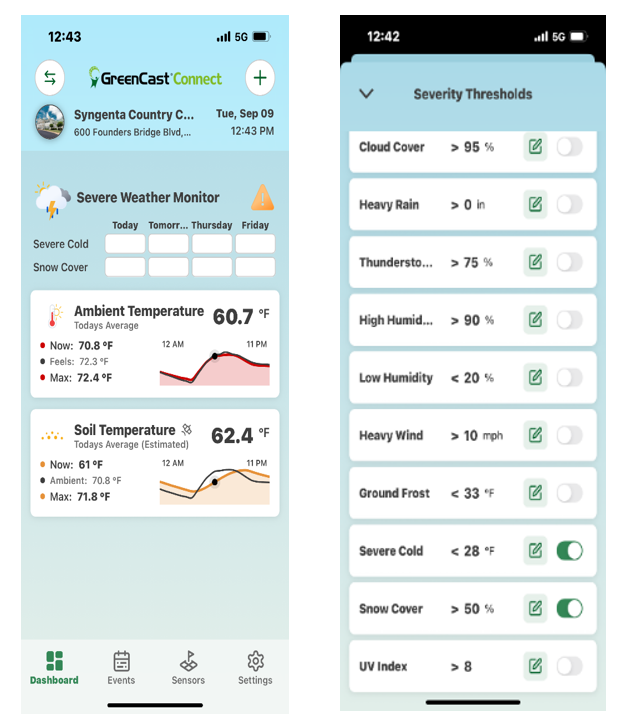Smarter winter care for ultradwarf bermudagrass using sensor technology
-
October 21, 2025
-
Share this article:
- SHARE:
By Travis Roberson, Ph.D., technical services field manager for Syngenta Digital Platforms
Ultradwarf bermudagrass is becoming a more established choice in the southern U.S. and transition zone. Improved varieties provide high-quality putting surfaces under intense heat and traffic, encouraging turfgrass managers to adopt it in northern climates for superior summer performance. However, in these northern climates, ultradwarf bermudagrass is susceptible to winter injury from extended exposure to low temperatures that compromise key plant components.
Winter protection: why covers matter
The principal way to protect ultradwarf bermudagrass greens is with black polypropylene covers, which elevate soil temperatures within the top subsurface of the soil, protecting the crown of the plant. It is recommended to use these covers when the temperature is predicted to drop below 25°F and to keep covers in place until these conditions subside. Knowing when to implement covers is a balance between risk prevention and revenue loss for any turfgrass manager with ultradwarf bermudagrass greens exposed to colder environments.
When covers are implemented, two operational challenges may result:
- Labor costs from installing and removing covers
- Prevention of play when covers are on the surface of the green
It’s not well known how these covers impact soil temperatures over a continuous period and how that relates to winter injury. It may be a better metric in deciding when to cover and not cover ultradwarf bermudagrass greens.
 |
| Figure 1A. Experimental layout with 12 ft. by 12 ft. no cover, single cover and double cover treatments initiated during January 2025 on a ‘Tif-Eagle’ ultradwarf bermudagrass green. Virginia Tech University. |
Using soil sensors for informed decisions
Research at Virginia Tech University looked at implementing Spiio™ soil sensors with covering treatments of no cover, single cover and double cover, each spanning 12 ft. by 12 ft. in size during the winter of 2024-2025. The goal was to provide insight into how these covering treatments influence day and nighttime soil temperatures on a near-continuous scale, which could be achieved because these sensors sample on an hourly resolution.
 |
| Figure 1A. Experimental layout with 12 ft. by 12 ft. no cover, single cover and double cover treatments initiated during January 2025 on a ‘Tif-Eagle’ ultradwarf bermudagrass green. Virginia Tech University. |
Figure 1A shows the experimental design. Three treatments were replicated four times, with one Spiio sensor installed at a depth of 3 in. within the center of each plot in November 2024, before the covering season. The covering event during January lasted from January 1-26, 2025 due to the number of consecutive days of minimum air temperature falling below 25°F.
 |
| Figure1B. Showing delayed greenup due to cold temperature exposure in late March 2025 for a 'Tif-Eagle’ ultradwarf bermudagrass green. Virginia Tech University. |
 |
| Figure1B. Showing delayed greenup due to cold temperature exposure in late March 2025 for a 'Tif-Eagle’ ultradwarf bermudagrass green. Virginia Tech University. |
Figure 1B shows the delayed greenup of no cover treatments when exposed to these extreme cold temperatures for extended periods. However, even with the observed severity of delayed greenup, no winter desiccation occurred, with all no cover treatments recovering by late summer.
Figure 2 shows the average soil temperature separated by treatments in response to changing air temperatures.
The highlight of the study occurs during the period spanning January 21-29: The Spiio data shows that during the coldest period of the covering event, the no-cover treatment remained below 32°F, even when covers were removed on January 26. These freezing soil responses indicated by Spiio data could be linked to the above-ground damage observed.
 |
| Figure 2. Average soil temperature data for no cover, single cover and double cover treatments for a ‘Tif-Eagle’ green in Richmond, Virginia, for a covering event in January 2025. The blue line indicates a key separation where soil temperatures fall below freezing temperatures at 32°F due to air temperature descending to extremely low temperatures. |
 |
| Figure 3. GreenCast Connect air and soil temperature, along with customization of severe weather monitoring thresholds for data, all in one place to make critical decisions during the winter season for bermudagrass greens management. |
GreenCast® Connect provides the capability for accurate above- and below-ground insights for users who make critical decisions for managing ultradwarf bermudagrass greens in winter conditions. Users can install Spiio soil sensors on bermudagrass greens and set thresholds — similar to what is found in research — within GreenCast Connect to trigger soil temperature alerts for before, during and after covering events. Users can also take advantage of precise weather data aggregated in the same platform to monitor air temperature and set severe weather thresholds for severe cold conditions (Figure 3).
 |
| Figure 3. GreenCast Connect air and soil temperature, along with customization of severe weather monitoring thresholds for data, all in one place to make critical decisions during the winter season for bermudagrass greens management. |
Learn more about GreenCast Connect or download the app at GreenCastConnect.com.
References:
- DeBoer, E. J., M.D. Richardson, J.H. McCalla, and D.E. Karcher. 2019. Reducing ultradwarf bermudagrass putting green winter injury with covers and wetting agents. Crop, Forage & Turfgrass Mgmt. 5:190019.
- DeBoer E.J., D.E. Karcher, J.H. McCalla, and M.D. Richardson. 2020. Effect of late-fall wetting agent application on winter survival of ultradwarf bermudagrass putting greens. Crop Forage & Turfgrass Mgmt. 6: e20035.
- Goatley, J.M., Jr., J.P. Sneed, V.L. Maddox, B.R. Stewart, D.W. Wells, and H.W. Philley. 2007. Turf covers for winter protection of bermudagrass golf greens. Applied Turfgrass Science. 4:1–9.
- O'Brien, P. and C. Hartwiger. 2013. Covering guidelines for ultradwarf bermudagrass putting greens. USGA Green Section Record. January 9. 51(1).
All photos are either the property of Syngenta or are used with permission.
© 2025 Syngenta. GreenCast® and the Syngenta logo are trademarks of a Syngenta Group Company. Spiio™ is a trademark of Spiio, Inc. All other trademarks are the property of their respective third-party owners.